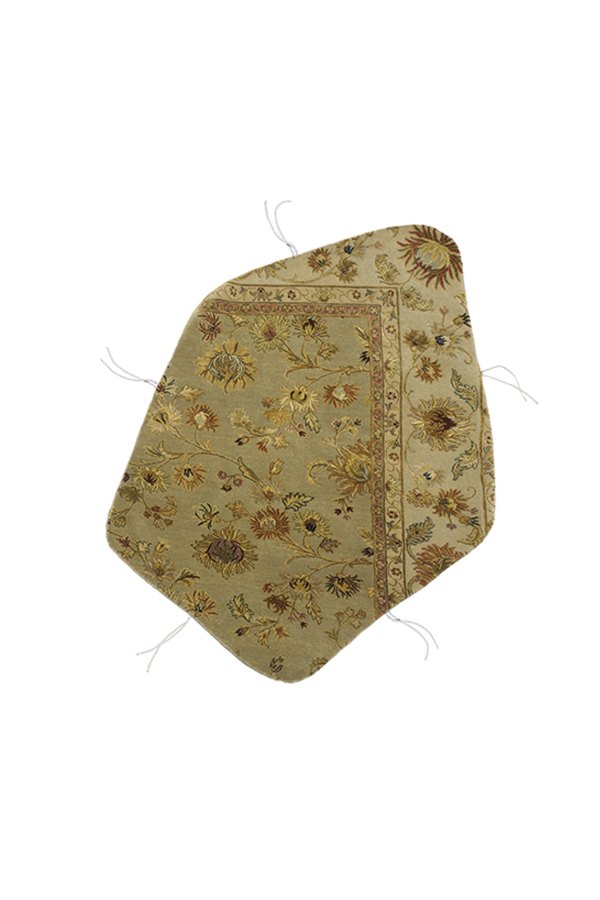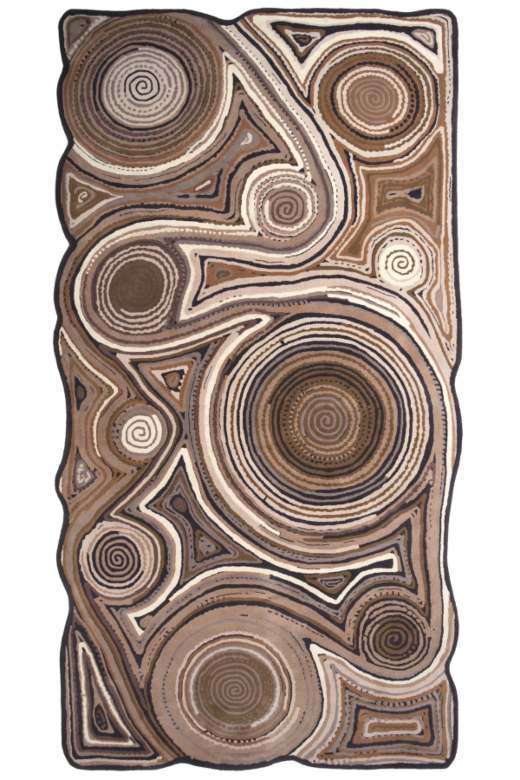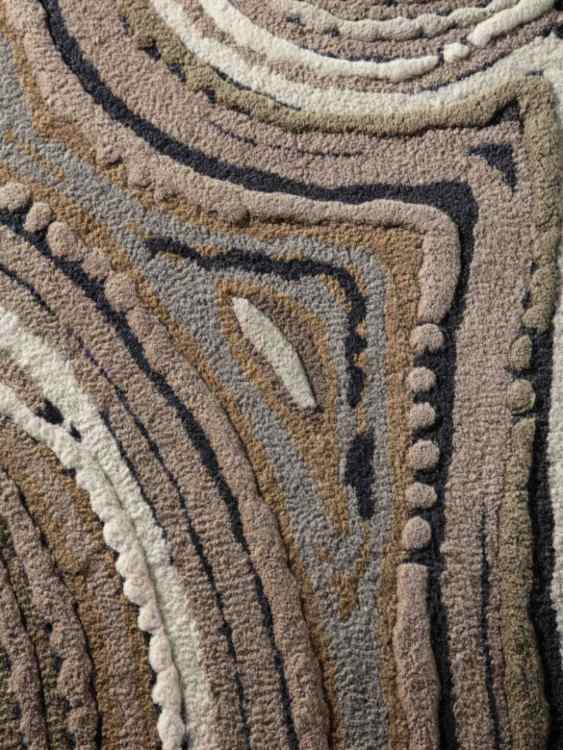Handmade indian carpet: what are its characteristics? How to include it in a furnishing project?
Design — Materials and techniques — Oct 13.2023
Together with the Turkish and Persian pattern, the handmade indian carpet represents the highest expression of this millenary art.
Unlike other artefacts of oriental origin, Indian models have unique characteristics that are worth knowing about. We discuss them in today’s post.
What should you know about handmade carpets from India?
Although at first glance Indian, Persian and Turkish carpets seem to share many characteristics, the reality is that they are textile products with very different histories and qualities.
In India, traditional carpet making developed later than in other Oriental countries. It was not until the 16th century that the first carpets were imported into the country by the Mughal dynasty, and it was from this period that the Indian school of carpet making developed.
Of course, Indian craftsmen took their cue from the processing system already established in the rest of Asia (for example, the asymmetrical knot, typical of traditional Turkish production, is used), but they introduced important innovations, especially in terms of carpet design.
The handmade indian carpet is characterised by the presence of impressive floral decorations and the use of bright colours. In the most precious models, the workmanship is so precise that the flowers appear to be painted.
Indian handmade carpets are knotted by hand, usually using a warp made of wool or cotton, more rarely silk. Knots are attached to the warp to form the weft, which is mainly made of wool. Other examples of hand-knotted carpets in India are made of cotton or silk, but the most common yarn is undoubtedly wool, which is offered in yarns of different thicknesses and quality.
In addition to hand-knotted carpets, it is also common to find pieces that are hand-woven, particularly kilim carpets . These pieces, with their flat and very durable weave, are extremely versatile furnishing solutions.

What are the characteristics of a handmade indian carpet?
One of the most striking features of Indian carpets is the bold use of colours. The yarns used in the production of the various pieces are dyed using natural pigments, giving the fibres vibrant and intense colours. The dominant colours in typical Indian carpets are red, blue, yellow and pink, with nuances that succeed in giving vibrancy and vitality to the different patterns.
Looking at a traditional carpet from India, one can see that the design features very intricate and detailed floral patterns. This testifies to the craftsmanship of the artisans and allows one to appreciate how much care has gone into producing a unique piece of priceless value.
In the Indian tradition for hand-knotted carpets, the use of the asymmetrical knot is employed, resulting in very compactly structured pile with excellent durability.
Still on the subject of design, it is worth noting another element that distinguishes the handmade indian carpet from other Oriental textile products. While in Turkey and Persia, several production schools developed, which devised and carried out characteristic decorative motifs that still allow us to identify the production area of the patterns, this did not happen in India. Thus, the aspect that most enables one to identify the origin of carpets made in India is the use of colour.
How to choose a handmade indian carpet?

Choosing a handmade Indian carpet requires attention and the ability to analyse the characteristics of the carpet in order to determine its quality and value,
To make the right choice, one must first check the material used for the individual artefact. If one wants a comfortable, long-lasting and elegant product, wool is the best choice. Silk carpets are also a good investment, but one must take into account that this yarn is very delicate.
In addition to the material, the processing technique must also be carefully considered. High-quality carpets are hand-knotted, with a high number of knots per square metre. As a general rule, it must be kept in mind that the higher the knot density of the piece, the better its quality. A high number of knots in fact testifies to the use of a fine yarn, which is usually stronger and more valuable.
When it comes to a handmade indian carpet, the best quality models are made from wool obtained from animals living on the Kashmir plateau. This wool is known for its softness and durability, and makes for very elegant-looking carpets that are able to retain their beauty for decades.
Thanks to the craftsmanship, handmade indian carpetcan be made in any format, size and shape. Those who wish to furnish their homes with a customised piece can resort to a made-to-measure design and get exactly what they need.
Nodus creates prestigious rugs.
Bring luxury into your home!
>>> CONTACT US! <<<
![]() Nodus has reinvented the luxury rug. It was in fact the first brand to propose the concept of the rug as a work of contemporary art.
Nodus has reinvented the luxury rug. It was in fact the first brand to propose the concept of the rug as a work of contemporary art.
Nodus has always created exclusive products that furnish the most beautiful homes in the world. Do you want to make your home inimitable as a work of art?
Bring a hand knotted rug of the highest quality and design into the spaces of your daily life! Give your family and the people you love the beauty of a dream masterpiece! Every piece of Nodus is designed by famous Designers, making it recognisable and prestigious. In this way, each rug is unique: you will not find another one like it. Like all beautiful and unrepeatable things, one piece in the Nodus collection sets you apart and speaks to others about your taste and elegance. CONTACT US!